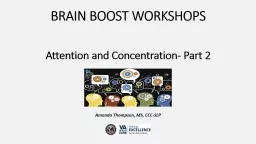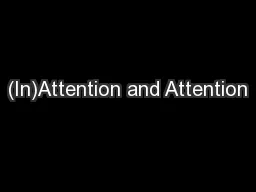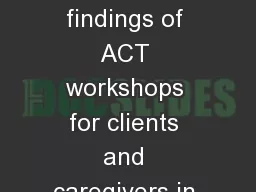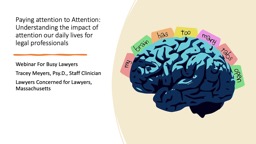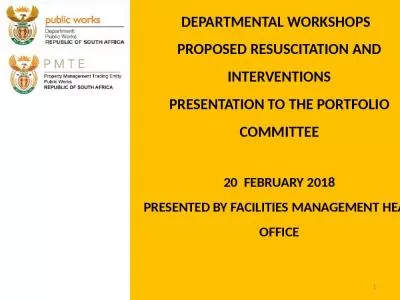PPT-BRAIN BOOST WORKSHOPS Attention and Concentration- Part 2
Author : jasmine | Published Date : 2022-02-16
Amanda Thompson MS CCCSLP Todays Discussion Topics Introduce and practice strategies to improve attentional abilities Selfevaluation to identify areas for future
Presentation Embed Code
Download Presentation
Download Presentation The PPT/PDF document "BRAIN BOOST WORKSHOPS Attention and Con..." is the property of its rightful owner. Permission is granted to download and print the materials on this website for personal, non-commercial use only, and to display it on your personal computer provided you do not modify the materials and that you retain all copyright notices contained in the materials. By downloading content from our website, you accept the terms of this agreement.
BRAIN BOOST WORKSHOPS Attention and Concentration- Part 2: Transcript
Download Rules Of Document
"BRAIN BOOST WORKSHOPS Attention and Concentration- Part 2"The content belongs to its owner. You may download and print it for personal use, without modification, and keep all copyright notices. By downloading, you agree to these terms.
Related Documents

